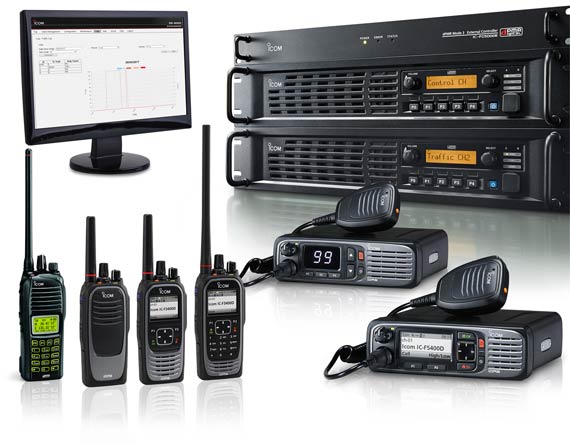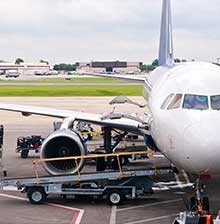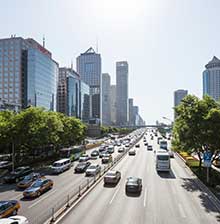Utilities
Mode 3 can support all aspects of infrastructure, production, processing and distribution for water electricity and other utilities.
Part of the ETSI standard TS102 658, dPMR Mode 3 offers managed access, multi-site trunked systems and complex systems including all the same interfaces and gateways as Mode 2.
dPMR Mode 3 is ideally suited to larger business, manufacturing and industrial enterprises, mass transport services, Public Access Mobile Networks and Government Departments where system flexibility, scalability and the availability of instant communication in voice and data is critical to safe, efficient operation. It offers multi-channel, multi-site radio networks fully managed by specific beacon channels at each radio site to ensure optimum use of both the available spectrum and density of radio traffic.
dPMR Mode 3 was specifically developed to provide a logical and cost-effective migration pathway from MPT 1327 trunking to the advantages of dPMR digital operation as both employ the (Frequency Division Multiple Access (FDMA) channel access method. Equipment and associated technologies conforming to dPMR Mode 3 operation was first introduced in 2013 and has since been adopted across a multitude of end user applications including airports, energy providers and government departments.
With a dPMR Mode 3 digital trunked system, when a user requests a call through a dedicated control channel, the trunking controller automatically allocates one of the traffic channels and sets up the call. The system can accommodate a large number of users on a limited number of repeater channels with high efficiency. System Control Software is employed to interconnect multiple trunking controllers over an IP network to provide a control channel trunked digital radio infrastructure over a large geographical area; connecting dispersed sites over different cities, regions or even countries.

Calls are set up by the infrastructure when both parties have responded to the call request, ensuring optimum use of the radio resource, alternatively, calls may be diverted to other radios, landline numbers or even IP addresses. As the allocation of communication channels is made dynamically, the system can further optimise traffic by dynamically modifying permitted call times. Radios that fail authentication can be blocked, either temporarily or permanently. A dPMR Mode 3 system can be configured to allow radios with the appropriate authority to make priority or emergency calls, pre-empting non-priority calls. In instances of exceptional demand, where call requests exceed capacity, non-priority calls are queued by the system until resources become available. All the services and functions available in Mode 1 and 2 are possible with a few exceptions, as well as several extra functions implemented by the beacon channel infrastructure.
Unlike the TDMA (Time Division Multiple Access) method which divides a 12.5kHz channel into two alternating 30msec timeslots to achieve 6.25kHz equivalence, the FDMA (Frequency Division Multiple Access) method employed by dPMR divides the same 12.5kHz channel in length, creating two identical 6.25kHz channels, allowing users to effectively double the capacity their usable spectrum without the need for a repeater to synchronise time slots. This is especially important in ensuring the availability of communication in critical situations when there is increased demand on an allocated radio spectrum.

Both channel access methods offer distinct features and benefits and the choice between the two should ultimately be made based on its suitability for the end use application.

As with all dPMR Modes, equipment complying with dPMR Mode 3 is backward compatible with legacy analogue equipment and can operate in both FM analogue and dPMR digital modes giving users a logical and cost effective pathway in the migration from analogue systems to the benefits of digital two way radio technology.
Current equipment complying with ETSI standard TS102 658 for operation in dPMR Mode 3 includes hand-portables, mobiles, base stations, modems, repeaters, controllers and hand-portable radios meeting with IEC Ex/ATEX based IS specifications for use in explosive atmospheres in the oil, mining and chemical industries.

Mode 3 can support all aspects of infrastructure, production, processing and distribution for water electricity and other utilities.

Mode 3 can provide a high quality service to both owner/operators and to end users; giving access to a customised system to meet their needs.

dPMR is there to help you keep safety and production at the highest levels in all areas of exploration, processing, production and distribution.

From airside to landside Mode 3 systems can support your staff in meeting the needs of this fast changing environment, providing reliable customer support.

Across busy ports Mode 3 can work with contractors and shipping companies to ensure safe and efficient operations throughout the whole site.

dPMR Mode 3 can provide the flexible responses and scalable systems needed by local and regional government in the delivery of essential services.
Membership info or technical data and all else in between; we're happy to answer your queries ...
The dPMR Association was established in 2007 and provides a forum for interested parties to contribute their expertise.
Get the latest updates